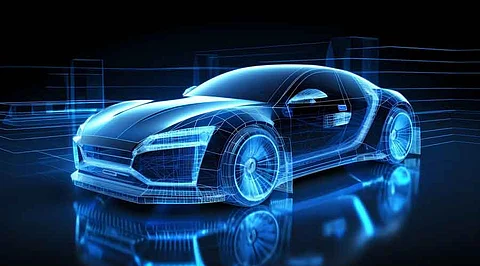

The automotive industry is undergoing a revolution, with self-driving cars and autonomous vehicles at the forefront of innovation. These vehicles promise safer, more efficient, and convenient transportation. At the heart of this transformation lies Artificial Intelligence (AI), a technology that empowers these vehicles to navigate, make decisions, and interact with their environment.
AI is the driving force behind a self-driving car's ability to perceive its surroundings. These vehicles are equipped with a range of sensors, including LiDAR, cameras, radar, and ultrasonic sensors. AI algorithms process data from these sensors in real time to create a detailed map of the vehicle's environment. Machine learning techniques, such as neural networks, help identify objects, pedestrians, other vehicles, and road signs. This enables the car to make informed decisions about speed, lane changes, and avoiding obstacles.
Once the self-driving car has perceived its surroundings, AI takes the wheel, so to speak, in making critical decisions. Complex algorithms assess the information collected from sensors, considering factors like traffic rules, road conditions, and the vehicle's destination. The AI system determines how the car should navigate, when to accelerate or brake, and when to change lanes or make turns. These decisions are made rapidly and are constantly updated as the car moves through its environment.
One of the strengths of AI in autonomous vehicles is its ability to learn and adapt. Over time, self-driving systems become more proficient through machine learning. They analyze vast amounts of data collected from countless driving scenarios to improve their decision-making processes. This continuous learning allows autonomous vehicles to handle increasingly complex and unpredictable situations on the road.
AI also plays a critical role in the connectivity and communication aspects of autonomous vehicles. These vehicles are often equipped with advanced communication systems that enable them to exchange data with other vehicles, infrastructure, and even pedestrians. AI manages this communication, facilitating features like vehicle-to-vehicle (V2V) and vehicle-to-infrastructure (V2I) communication, enhancing safety and traffic efficiency.
Safety is paramount in self-driving cars, and AI is instrumental in ensuring it. Autonomous vehicles use redundant systems and fail-safes to minimize the risk of accidents. AI continuously monitors the health of critical components and can take corrective actions in case of system failures or anomalies. This redundancy is a crucial feature for gaining public trust in autonomous technology.
The role of AI in self-driving cars and autonomous vehicles is undeniably transformative. AI-powered systems enable these vehicles to perceive their surroundings, make complex decisions, learn from experience, communicate with other vehicles, and prioritize safety. As technology continues to advance, we can expect self-driving cars to become increasingly integrated into our daily lives, revolutionizing transportation and shaping the future of mobility. With ongoing research and development, AI is steering us towards a world where self-driving cars are not just a vision but a reality
Join our WhatsApp Channel to get the latest news, exclusives and videos on WhatsApp
_____________
Disclaimer: Analytics Insight does not provide financial advice or guidance. Also note that the cryptocurrencies mentioned/listed on the website could potentially be scams, i.e. designed to induce you to invest financial resources that may be lost forever and not be recoverable once investments are made. You are responsible for conducting your own research (DYOR) before making any investments. Read more here.
